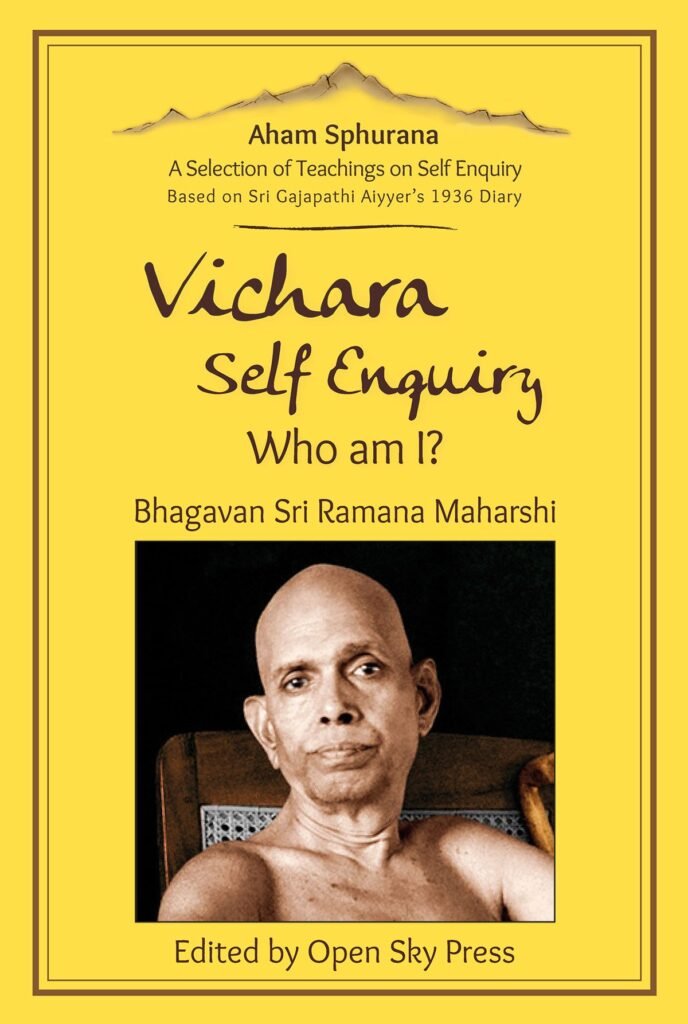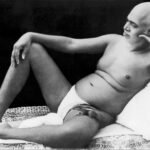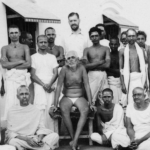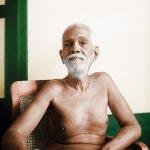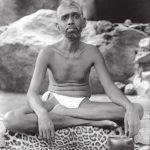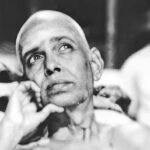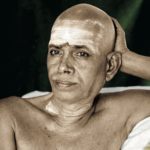Blog
Spiritual Teachings
from the Heart of Satsang
Browse by Topic through the Archive
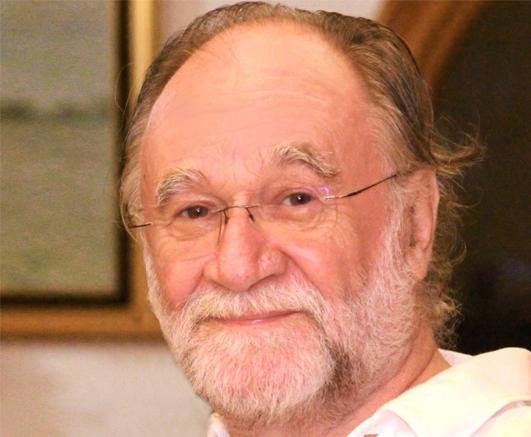
Or use the Search Function
Latest Blog
Trust in God
Sri Ramana Maharshi
on Trust in God
Edited by John David Oct 2021
INTRODUCTION
In this blog “Ramana Maharshi on Trust in God”, Sri Ramana Maharshi addresses a situation in the Ashram where the manager rebuked Sri Sadai Chettiar, the caretaker of the Draupadiamman temple, in front of the attendees. Mr. Knowles had donated 75 rupees for the maintenance of the temple, but the manager demanded part of the sum for the Ashram’s needs, arguing that the donation was made because of Bhagavan. When Sri Ramana Maharshi noticed the caretaker’s discomfort, he immediately spoke up, emphasizing the importance of trust in God’s provision to meet all needs. Bhagavan’s words guided the Ashram’s manager to reconsider his actions, and ultimately, the issue was resolved with Mr. Knowles offering to pay the caretaker directly, putting an end to the matter.
Available Worldwide
on www.openskypress.com and Amazon:
Amazon DE
Widely appreciated
“In my opinion, Aham Sphurana, a Glimpse of Self Realisation, will become a Treasure Trove of Wisdom to the Seekers of Truth in general, and particularly to the devotees of Bhagavan.”
Swami Hamsananda – Athithi Ashram, Tiruvannamalai
“This collection is a profound offering for those who are inspired to deeper inquiry. I have read both volumes for myself and others. Many passages reveal freshly and intimately the gift that is Ramana Maharshi. This is a book to cherish.”
Gangaji
“Thanks for presenting the book. I went through the book and it is indeed a good read. As you have mentioned, certain portions are controversial. However, many portions on Self-enquiry (genuinely in Bhagavan’s words) are profound and helpful to the seekers. Pranams”
Sri Ramanacharana Tirtha Swami
(formerly Sri Nochur Venkataraman),
“An excellent book suitable for anyone serious about the spiritual life and committed to knowing profound and liberating realisations. The beauty of Ramana’s teachings shows in the unwavering directness with a remarkable clarity and simplicity. Meditate on the questions and responses. Listen inwardly beneath the mind’s activity.”
Christopher Titmuss
“Aham Sphurana is the most profound, subtle and practical version of Ramana Maharshi. When you read this book you realise just how diluted, vague and lacking are most of the books published in the name of this great sage of Arunachala.
It is not an easy new age read, it is the real deal with all its subtleties and intricacies. Our role is to develop a profound, sensitive and subtle mind and heart to understand and absorb these teachings.
The persons who wrote and published this book faced fierce objection from many people and are no less than warriors of spiritual truth.
Their devotion and respect to Ramana Maharshi made them fight this war and they deserve our appreciation and respect for making these rare teachings available to us.”
Noah
2nd Volume
now available
on www.openskypress.com and Amazon:
The pristine, pure mind of the Master that speaks through this profound volume is bound to bring us to an awakening into the most obvious yet hidden truth of our own existence.
Pravrajika Divyanandaprana
Trust in God
A scene took place in the Hall, wherein the master upbraided the Ashram’s sarvadhikari [manager] in front of all the attendees. Seeing the dilapidated condition of the Draupadiamman temple near the Ashram, Mr. Knowles had donated a sum of 75 rupees toward its upkeep and maintenance, with a view to prevent at least further incremental damage to the somewhat neglected ancient shrine on account of the passage of time. He had donated the sum to Sri Sadai Chettiar, the temple’s manager. The Ashram’s sarvadhikari had come to know about this, and had wrested away the sum in part from the poor man, telling him,
“That Caucasian has come to Tiruvannamalai not to see your Draupadiamman temple but only to see our Bhagavan. Only because of Bhagavan have you received this endowment toward the temple’s welfare; had it not been for him, would somebody from such a distant country ever dream of setting foot in this place? No. So, give 50 rupees to the Ashram and the rest you can use for the temple. We are in dire need of funds. What are you going to do with 75 rupees? It will encourage you to go in for wasteful expenditure, whereas even for necessaries we find ourselves in a tight corner in the Ashram.
“For buying flowers, sandal-paste, and vermillion-powder will anybody need so much money? You require no expenditure to the massive tune of 75 rupees. For day-to-day pooja expenses 25 rupees is more than enough. So, come to the Ashram now and hand over 50 rupees. That Caucasian is staying in the Ashram — don’t forget it — and so the Ashram has a right of say over this money.”
The Chettiar was sitting in the Hall with a sad face and the master at once found out that his feelings were perturbed. Soon the cat was out of the bag. Bhagavan, addressing the sarvadhikari, spoke thus:
“Why should we behave like this? If we trust in God to take care of our needs, He will provide us with everything we need. There is no need for undue anxiety.”
The sarvadhikari directed a baleful look of resentment at the poor Chettiar who had meekly huddled himself together at the foot of the Sofa, with his arms clasped around his knees and chin nestled betwixt them, and who was pointedly avoiding looking at him. At once, the master told the sarvadhikari,
“Do not find fault with Chettiar for having revealed these happenings; he was sitting quietly in the Hall; it was this that wanted to know the truth of the matter.”
The sarvadhikari dolefully said that he would return the money at once. Now Mr. Knowles spoke up.
“I was thinking that I would pay my respects to the Ashram monetary-wise at the time of my departure from here; that is why I have not paid any donations here yet. There is no need for the manager to return the money. I shall pay the temple-man again; it is no matter; please let us discuss the issue no further, I beg you all.”
This seemed to promptly satisfy everybody, and the matter was dropped then and there.

More from Ramana Maharshi
Realise the Self
Realisation occurs when one surrenders completely, lets go of ego, embraces silence, and abides as the timeless, changeless Self.
How we Sabotage Vichara
Sabotage ends when we discard the ‘I’ that strives for Realisation, resting in pure Subjective Consciousness, free from identification.
Mrs Piggot’s Diary
Mrs. Piggot recounts her farewell to Bhagavan, highlighting his quiet knowing, grace, and teaching to live as the Self.
Libelling Bhagavan
A manager reports a slanderer’s misdeeds, but Bhagavan, serene and detached, laughs, accepting all as part of divine play.
A Dialogue with a Mature Visiter
Bhagavan guides a seeker beyond concepts, showing that diligent Self-inquiry removes doubt and ignorance, revealing the timeless Self.
Sri Gajapathi Healed and Attacked
Through Grace, Love, and remembrance, illness was healed, fear dissolved, and an enduring devotion to Bhagavan and Hanuman remained.
Rooting Out the Ego and Persevering on the Path
Root out ego directly, persevere endlessly despite obstacles, and realise you never left the summit of pure Being.
Complete Cessation of Mental Activity
Only the complete, motiveless cessation of mental activity reveals the Self, showing the personal ‘I’ never truly existed.
Danger of Emptiness [shunyastithi]
Bhagavan warns that mistaking emptiness for Jnana is a deadly trap, delaying true realization and making recovery a challenging path.
Guru’s Grace
Ramana Maharshi explains that Guru’s Grace burns ego and mental habits, allowing total surrender and spontaneous Self-Realization to arise.
Get Your Copy of the Book
Aham Sphurana
A Glimpse of Self Realisation
New Book about Sri Ramana Maharshi
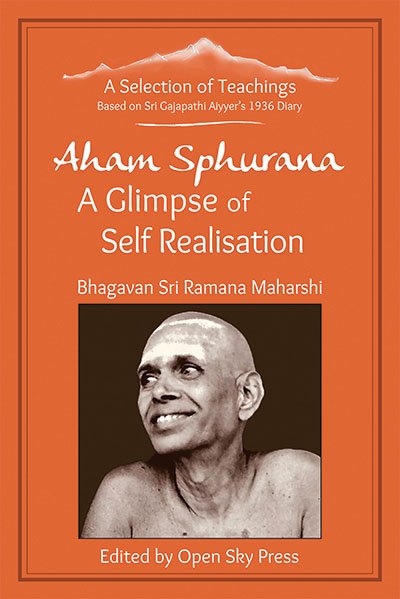
Available Worldwide
On www.openskypress.com and Amazon:

“In my opinion, Aham Sphurana, a Glimpse of Self Realisation, will become a Treasure Trove of Wisdom to the Seekers of Truth in general, and particularly to the devotees of Bhagavan.”
Swami Hamsananda – Athithi Ashram, Tiruvannamalai

Reference Books and Translation

Aham Sphurana
A Glimpse of Self Realisation
New Book about Sri Ramana Maharshi

Available Worldwide
On www.openskypress.com and Amazon:

“In my opinion, Aham Sphurana, a Glimpse of Self Realisation, will become a Treasure Trove of Wisdom to the Seekers of Truth in general, and particularly to the devotees of Bhagavan.”
Swami Hamsananda – Athithi Ashram, Tiruvannamalai
Reference Books and Translation
Much of the content presented here, showing Bhagavan reeling off verses from the Bible and other texts, is done so with the implicit assumption that the reader would naturally give himself to understand that Bhagavan was reading out from a book; certainly, Bhagavan did not burst out with these lines of prose or poetry from memory— at least, not in a majority of the cases.
I felt too lethargic to jot down every time Bhagavan asked the attendant to fetch this or that book from the bookcase in the Hall. When the attendant complied, Bhagavan then opened the book at the requisite page, without searching, and handed over the same to the interpreter with instructions to read out select portions to the Hall…and so forth.
Likewise, an interpreter — many times Mr. TKS, occasionally myself in those fortunate few months I dwelt continuously in Tiruvannamalai, or someone else — was used whenever the other person was to be spoken to in English [even if it was a long-standing devotee domiciled within the Ashram on a permanent basis, such as Chadwick or Cohen].
Bhagavan himself needed no interpreter. When Bhagavan himself speaks English the same is indicated in brackets here by me. There were times when, for a Caucasian language, no interpreter would be available. It was then that the master would himself speak it, mellowly, placidly, and distinctly. An example is a conversation with the Swiss Professor Hüber, which took place directly in German without the assistance of any interpreter. Needless to say, on such occasions, what I have reported is certainly limited to how much I could follow. For instance, the substance of the above conversation, since it was in German, could be rudimentarily followed by me, albeit not without difficulty — but when in December 1936 a Mrs. Suzanne Sen visited the Ashram and exchanged a few words with the master in French, I was clueless, and had to depend upon Chadwick to later relate to me what they had spoken about.
I have not pointed out separately conversations which were carried on through an interpreter in consideration of the length of this manuscript. Likewise the names, cultural backgrounds, ethnicities, nationalities, and professed existing spiritual competencies of the various visitors who quizzed the master have also been—largely—filtered out whilst preparing this manuscript. A lengthy manuscript may fizzle out the patience of a prospective publisher; also, I am aware that a book that appears tediously lengthy is — more often than not — ignored and bypassed at bookshops!
Edited by John David Oct 2021


